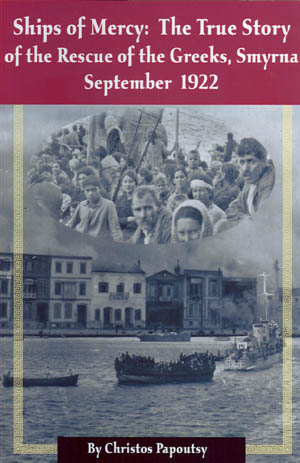 |
||||
|
Jennings Honored in New York for Aid in Smyrna Holocaust, Descendants Give Testimony |
||||
|
Cleveland, NY -- Dr. Stergeos Arvantides and his sister, Anna Bantuvanis, believe they owe their lives to Asa K. Jennings. Jennings, an Upstate Methodist minister now buried in Oswego County, in 1922 helped organize ships that saved more than 300,000 people —mostly Greeks — who likely would have perished at the hands of theTurkish government. Among those saved were Arvantides’s and Bantuvanis’s mother and grandfather. “He helped all those people during the extermination and genocide in Turkey — he helped get the ships to Smyrna,” said Arvantides, who lives in Lysander and has a dental practice in Baldwinsville. Jennings, at 5 foot 2 inches in height, with a hunchback, didn’t look the part of a hero. But Jennings, who is buried in the Cleveland Village Cemetery, is a hero to Arvantides, Bantuvanis and many other Greeks for what he did in September 1922. |
||||
His story was told during a special program on September 14th at his gravesite in Cleveland Village Cemetery, followed by a program and display at Cleveland United Methodist Church, with a speech by Jennings' grandson, Roger Jennings, of Queensbury, New York. was the greatest rescue in the history of mankind,” Roger Jennings said. Arvantides said the homeland of his mother and father’s families was in the area known today as Turkey. Greeks had lived there dating back to the time of its invasion by Alexander the Great. But 1922 was a different time. After centuries of various ethnic groups living in Asia Minor, the Turkish government wanted to cleanse the country of other nationalities, mostly Greeks, Armenians and the Assyrians, according to experts and histories written about the time. |
|
|||
Many Greeks and others, being sent to a part of Turkey where food and water were scarce, faced almost certain death, they said. Others, including Arvantides’ and Bantuvanis’ mother and grandfather —Fani Arvantides, then 28, and George Pappas, then 74 — headed toward the sea and the city of Smyrna. |
||||
That is where Asa K. Jennings enters the story. Jennings, a United Methodist minister from the Mohawk Valley, was working for the YMCA at the time, serving in Smyrna, a large city in western Turkey on the Mediterranean Sea. It’s known today as Izmir. His grandson described Asa Jennings as a humble man, who lived the New Testament, was nonconfrontational and turned the other cheek. |
|
|||
|
|
||||
|
(Posting date 18 September 2012. Source: "Man with ties to Oswego County helped save Greeks, Armenians, Assyrians after World War I," by Debra J. Groom, in the Cleveland [NY] Post-Standar, 15 September 2012.) Article submitted to HCS by Roger Jennings and by June Samaras. HCS encourages readers to view other articles and releases in our permanent, extensive archives at the URL http://www.helleniccomserve.com/contents.html.
|
||||
|
||||
|
2000 © Hellenic Communication Service, L.L.C. All Rights Reserved.
http://www.HellenicComServe.com |
||||

